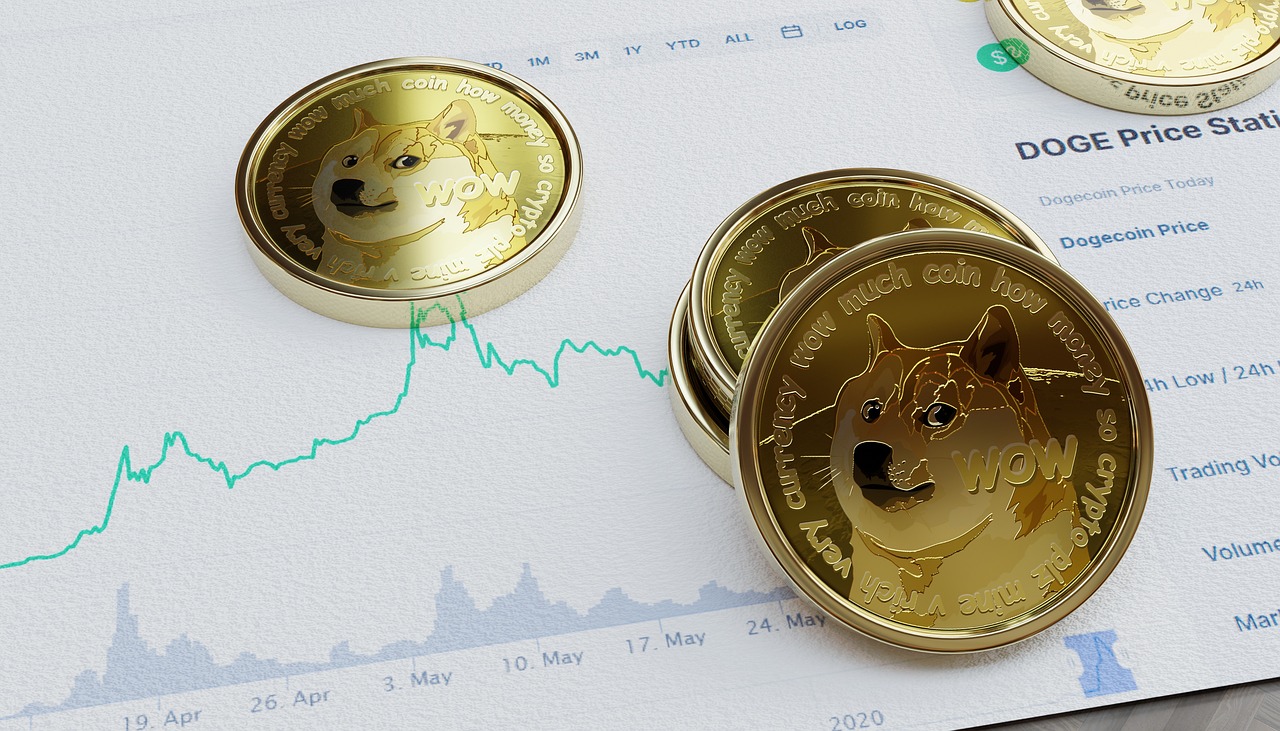Understanding the Basics of Cryptocurrency Options Trading
Cryptocurrency options trading is an intriguing and dynamic aspect of the financial world, combining the excitement of digital currencies with the strategic elements of options trading. Imagine having the ability to control a significant amount of cryptocurrency without the need to actually own it outright. This is precisely what options trading offers! By using options, traders can speculate on price movements, hedge against potential losses, and even generate income—all while managing their risk. In this article, we will dive deep into the fundamental concepts of cryptocurrency options trading, uncovering its mechanisms, benefits, risks, and strategies that can empower both beginners and seasoned traders alike.
At its core, cryptocurrency options trading involves contracts that give traders the right, but not the obligation, to buy or sell a specific cryptocurrency at a predetermined price within a specified timeframe. Think of it as having a ticket to a concert: you can choose to attend (exercise your option) or sell your ticket to someone else (trade your option) without any obligation to go. This flexibility is what makes options trading particularly appealing. The two main types of options are call options, which allow for purchasing, and put options, which allow for selling. Each type serves distinct purposes in a trader's strategy.
When venturing into cryptocurrency options trading, it’s essential to understand the two primary types of options: call options and put options. These options cater to different trading strategies and risk profiles, allowing traders to tailor their approach based on market conditions. Let’s explore each type in more detail.
Call options are contracts that allow traders to purchase a cryptocurrency at a set price, known as the strike price, before a specific expiration date. This means if you believe the price of a cryptocurrency, say Bitcoin, is going to rise, purchasing a call option can be a savvy move. By doing so, you can benefit from price increases while limiting your potential losses to the premium you paid for the option itself. It's like placing a small bet on your favorite horse; if it wins, you reap the rewards, but if it doesn’t, your losses are contained.
One of the most significant advantages of call options is their ability to amplify potential profits in a bullish market. Traders can gain exposure to a larger amount of cryptocurrency without having to invest the full capital upfront. This leverage can lead to substantial returns if the market moves in the trader's favor. Additionally, because the risk is limited to the premium paid, traders can engage in high-stakes trading without the fear of losing their entire investment. Here’s a quick summary of the benefits:
- Leverage: Control a larger position with a smaller investment.
- Limited Risk: Maximum loss is confined to the premium paid.
- Profit Potential: Benefit from price increases without owning the asset.
However, it's crucial to recognize that call options are not without risks. The primary risk is the loss of the premium paid if the market does not move favorably before the expiration date. In essence, if you buy a call option and the price of the underlying cryptocurrency doesn't rise above the strike price, you may find yourself out of pocket. This can be likened to buying a ticket to a concert that gets canceled; you lose your money without any chance of a return. Understanding these risks is vital for any trader looking to navigate the options market successfully.
On the flip side, put options grant traders the right to sell a cryptocurrency at a predetermined price. This can be particularly useful for hedging against price declines. For instance, if you own Bitcoin and fear that its price may drop, purchasing a put option can act as insurance. If the price does fall, you can sell your Bitcoin at the higher strike price, effectively minimizing your losses. This strategy is akin to taking out a home insurance policy; you hope you never need it, but it provides peace of mind just in case.
Successful cryptocurrency options trading requires a solid understanding of various strategies that can be employed depending on market conditions and individual trader objectives. These strategies include hedging, speculation, and income generation. Each of these approaches can be tailored to fit different risk appetites and market outlooks.
Hedging strategies involve using options to protect existing investments from adverse price movements. By employing options, traders can create a safety net against potential losses in the cryptocurrency market. This is especially important in the notoriously volatile world of cryptocurrencies, where prices can swing dramatically in a short period. Think of it as a safety harness when climbing a mountain; it may not prevent you from falling, but it can certainly soften the blow.
On the other hand, speculative strategies focus on capitalizing on price movements. Traders use options to bet on future price fluctuations, which can lead to significant profits or losses depending on market volatility. This approach is similar to a high-stakes poker game, where the right read on your opponents (the market) can lead to a big win, but a miscalculation can result in losing your entire stack.
What is the difference between call and put options?
Call options give the right to buy, while put options give the right to sell a cryptocurrency at a predetermined price.
How can options trading help manage risk?
Options trading allows traders to hedge against price movements, providing a way to protect their investments from market volatility.
Are there any significant risks associated with options trading?
Yes, the primary risk is losing the premium paid for the option if the market does not move favorably before expiration.

What is Cryptocurrency Options Trading?
Cryptocurrency options trading is a fascinating financial mechanism that allows traders to engage with the volatile world of digital currencies in a unique way. At its core, options trading involves contracts that grant traders the right, but not the obligation, to buy or sell a specific cryptocurrency at a predetermined price, known as the strike price, within a designated time frame. This flexibility is what makes options a popular choice among investors seeking to navigate the unpredictable waters of cryptocurrency markets.
To put it simply, think of cryptocurrency options trading like having a ticket to a concert. You buy the ticket (the option) that allows you to attend the concert (buy or sell the cryptocurrency) at a specific price. If the concert turns out to be a hit and the ticket prices soar, you can either sell your ticket for a profit or attend the concert yourself. However, if the concert flops, you can choose not to go, but you’ll lose the money you spent on the ticket. This analogy captures the essence of how options work in the cryptocurrency space.
One of the most appealing aspects of cryptocurrency options trading is that it provides traders with the opportunity to profit from both rising and falling markets. When you purchase a call option, you stand to gain if the price of the underlying cryptocurrency increases. Conversely, with a put option, you can profit if the price declines. This duality makes options a versatile tool for traders looking to capitalize on market movements.
However, options trading is not without its complexities. Understanding the various components, such as expiration dates, premiums, and intrinsic value, is crucial for anyone looking to dive into this arena. The premium is the price you pay for the option, and it can vary based on market conditions and the time remaining until expiration. As expiration approaches, the value of the option can change dramatically, influenced by the underlying asset's price movements.
In summary, cryptocurrency options trading offers a blend of flexibility and strategic opportunity that can be incredibly rewarding for those who take the time to understand its mechanics. Whether you’re a seasoned trader or just starting, grasping the basics of options can open up new avenues for profit and risk management in the ever-evolving world of cryptocurrencies.

Types of Cryptocurrency Options
When diving into the world of cryptocurrency options trading, it’s crucial to understand that there are two primary types of options available for traders: call options and put options. Each type serves distinct purposes and caters to different trading strategies, allowing investors to tailor their approach based on market conditions and personal risk tolerance.
Call options are contracts that give traders the right, but not the obligation, to purchase a specific cryptocurrency at a predetermined price, known as the strike price, before the option expires. This type of option is particularly appealing in a bullish market, where traders anticipate that the price of the underlying cryptocurrency will rise. By purchasing call options, traders can leverage their capital, gaining exposure to the cryptocurrency without needing to buy the asset outright. This means they can control a larger position with a smaller initial investment, amplifying potential profits while limiting their risk to the premium paid for the option.
On the flip side, we have put options, which grant traders the right to sell a cryptocurrency at a predetermined price within a specified timeframe. This type of option is essential for those looking to hedge against potential declines in the market. By purchasing put options, traders can protect their existing investments from adverse price movements. For instance, if a trader owns a certain amount of cryptocurrency and fears a price drop, buying put options can act as insurance, allowing them to sell at the strike price even if the market value falls significantly.
To summarize, here’s a quick comparison of the two types of cryptocurrency options:
| Type of Option | Purpose | Market Condition |
|---|---|---|
| Call Option | Right to buy | Bullish (expecting price increase) |
| Put Option | Right to sell | Bearish (expecting price decrease) |
In conclusion, understanding the differences between call and put options is essential for any trader looking to navigate the complexities of cryptocurrency options trading. Each type offers unique benefits and risks, making it vital for traders to assess their financial goals and market outlook before engaging in options trading. Whether you're looking to speculate on price movements or hedge against potential losses, the right option can make all the difference in your trading strategy.
As you embark on your cryptocurrency options trading journey, you might have some questions. Here are a few commonly asked ones:
- What is the main advantage of trading options instead of buying cryptocurrencies directly? Options provide leverage, allowing you to control a larger position with a smaller investment, and they can also serve as a hedge against market volatility.
- Are options trading strategies suitable for beginners? While options trading can be complex, beginners can learn the basics and start with simple strategies, gradually moving to more advanced techniques as they gain experience.
- What should I consider before trading cryptocurrency options? It's essential to understand the risks involved, have a clear trading strategy, and be aware of market conditions that could impact your options.

Call Options Explained
Call options are a fascinating aspect of cryptocurrency trading that can open up a world of possibilities for traders. Essentially, a call option is a contract that gives the buyer the right, but not the obligation, to purchase a specific cryptocurrency at a predetermined price, known as the strike price, within a designated time frame. Imagine you're eyeing a hot new cryptocurrency that you believe is going to skyrocket. Instead of purchasing it outright, you buy a call option. This allows you to control a larger amount of the asset while only risking the premium you paid for the option.
When the market is bullish, and the price of the cryptocurrency rises above the strike price, you can exercise your option, buy the cryptocurrency at the lower strike price, and then sell it at the current market price for a profit. This is where the magic of leverage comes into play! However, if the market doesn't move in your favor, the most you can lose is the premium you paid for the option. This limited risk makes call options an attractive choice for many traders.
To illustrate this, let’s consider a simple example:
| Scenario | Strike Price | Market Price at Expiration | Profit/Loss |
|---|---|---|---|
| Market Rises | $50 | $70 | $20 (minus premium) |
| Market Stays Flat | $50 | $50 | -$X (premium lost) |
| Market Falls | $50 | $30 | -$X (premium lost) |
In this example, if you bought a call option with a strike price of $50 and the market price at expiration is $70, your profit would be substantial, minus the premium you paid for the option. However, if the price stays at $50 or drops, your loss would be limited to the premium paid, showcasing the inherent safety of using call options.
Moreover, call options can be a strategic tool for traders looking to speculate on price movements. They allow you to leverage your capital efficiently, enabling you to potentially generate significant returns with a relatively small investment. However, it's crucial to remember that while the potential for profit is high, so is the complexity of options trading. Understanding market trends, price movements, and timing is essential to navigate this arena successfully.
In summary, call options are not just a financial instrument; they represent a strategic approach to trading that can help you maximize profits while managing risks effectively. Whether you're a seasoned trader or a curious beginner, grasping the fundamentals of call options can significantly enhance your trading toolkit.
- What is a call option? - A call option is a contract that gives the buyer the right to purchase a cryptocurrency at a specific price within a set time frame.
- What are the risks associated with call options? - The primary risk is the loss of the premium paid if the market does not move favorably before the option expires.
- How do I determine the right strike price? - Choosing the right strike price depends on your market analysis and risk tolerance. It's often a balance between potential profit and risk exposure.

Benefits of Call Options
Call options offer a plethora of advantages for traders looking to maximize their investment potential in the cryptocurrency market. First and foremost, they provide a unique opportunity to leverage a relatively small amount of capital to control a larger position in a cryptocurrency. This means that with a modest investment, you can gain exposure to significant price movements. Imagine being able to control 100 units of Bitcoin with just a fraction of its current price! This leverage is particularly appealing in a market known for its volatility.
Another major benefit is the limited risk associated with call options. When you purchase a call option, your maximum loss is confined to the premium you paid for the option. This is in stark contrast to buying the underlying asset outright, where the potential for loss can be much greater. For instance, if you buy a Bitcoin at $50,000 and it drops to $30,000, your loss is substantial. However, if you bought a call option with a premium of $1,000, that's all you stand to lose if the market doesn't move in your favor.
Moreover, call options can be a powerful tool for speculating on bullish market trends. If you believe that the price of a cryptocurrency will rise, purchasing call options allows you to profit from that increase without having to own the asset directly. This can be particularly advantageous in a rapidly moving market where timing is crucial. Additionally, call options can provide a means of generating income through strategies like writing covered calls, where you sell call options on cryptocurrencies you already own.
To summarize the benefits, here’s a quick overview:
- Leverage: Control larger positions with a smaller investment.
- Limited Risk: Maximum loss is restricted to the premium paid.
- Speculation: Profit from rising prices without owning the asset.
- Income Generation: Use strategies like covered calls for additional revenue.
In conclusion, call options are an essential tool in the arsenal of any savvy cryptocurrency trader. They not only offer potential for high returns but also come with a safety net that can protect your investments. Whether you're a newcomer eager to explore the crypto landscape or a seasoned trader looking to refine your strategies, understanding the benefits of call options is crucial to navigating this dynamic market effectively.
Q1: What is a call option?
A call option is a contract that gives the holder the right, but not the obligation, to buy a specific amount of a cryptocurrency at a predetermined price within a set timeframe.
Q2: How do I profit from call options?
You can profit from call options if the price of the underlying cryptocurrency rises above the strike price before the option's expiration date.
Q3: Are call options suitable for all traders?
While call options can be beneficial, they are best suited for traders who understand the risks and are willing to manage them. It's essential to have a solid grasp of market trends and strategies.
Q4: Can I lose more than my initial investment with call options?
No, when you buy a call option, your maximum loss is limited to the premium you paid for the option, making it a lower-risk investment compared to buying the asset outright.
Q5: What strategies can I use with call options?
Common strategies include buying calls for speculation, writing covered calls for income, and using them as part of a hedging strategy to protect existing investments.

Risks of Call Options
When diving into the world of call options, it’s crucial to understand that while they present exciting opportunities for profit, they also come with a set of risks that every trader should be aware of. One of the primary risks associated with call options is the potential loss of the premium paid for the option itself. Imagine you’ve bought a ticket to a concert, but when the day arrives, the event gets canceled. You’re out the money you spent on that ticket, and similarly, if the market doesn’t move in your favor, the premium you paid for the call option can vanish into thin air.
Furthermore, the timing of your trade plays a significant role in the risk equation. Call options come with an expiration date, and if the price of the underlying cryptocurrency doesn’t exceed the strike price before this date, your option may expire worthless. This aspect can be likened to a race against time; if you don’t reach the finish line before the clock runs out, all your efforts and investments may go to waste.
Another risk to consider is market volatility. While volatility can create opportunities for profit, it can also lead to unpredictable price swings. For example, if you purchase a call option expecting a bullish trend, but the market suddenly turns bearish, the value of your option may plummet. This unpredictable nature of the market can be frustrating and can lead to substantial losses if not managed properly.
Additionally, there’s the risk of over-leveraging. Traders often use options to control larger amounts of cryptocurrency with a smaller investment, which can amplify both gains and losses. If the market moves against you, the losses can accumulate quickly, leading to a situation where you might lose more than your initial investment. It’s essential to approach trading with a balanced mindset, recognizing that while the potential for profit exists, the risks are equally significant.
To summarize, here are the key risks associated with call options:
- Loss of Premium: If the market doesn’t move favorably, you could lose the entire premium paid for the option.
- Expiration Risk: Options have a limited lifespan, and if not exercised in time, they can expire worthless.
- Market Volatility: Sudden price changes can adversely affect your option's value.
- Over-leveraging: The potential for larger losses due to the use of leverage can lead to significant financial risk.
In conclusion, while call options can be a powerful tool in a trader's arsenal, it’s imperative to approach them with caution and a well-thought-out strategy. Understanding these risks can help you make informed decisions and potentially safeguard your investments in the ever-fluctuating world of cryptocurrency.
- What is a call option? A call option is a contract that gives the holder the right to buy a cryptocurrency at a predetermined price before a specific expiration date.
- What happens if my call option expires worthless? If your call option expires worthless, you lose the premium paid for the option, similar to losing the ticket price for a canceled event.
- How can I mitigate the risks of trading call options? To mitigate risks, consider using strategies like hedging or only investing a portion of your capital in options trading.
- Can I lose more than my initial investment with call options? Generally, the maximum loss is limited to the premium paid for the option, but over-leveraging can lead to larger financial losses.

Put Options Explained
Put options are a fascinating aspect of cryptocurrency trading that can serve as a powerful tool for investors looking to manage risk. Essentially, a put option gives the holder the right, but not the obligation, to sell a specific cryptocurrency at a predetermined price, known as the strike price, before a specified expiration date. Imagine you own a shiny new car, but you're worried that its value might drop in the coming months. A put option is like taking out an insurance policy on that car; it allows you to lock in a price at which you can sell it, no matter how low the market price might fall. This feature is particularly beneficial in the highly volatile world of cryptocurrencies, where prices can swing dramatically in a short period.
One of the primary benefits of put options is their ability to act as a hedge against falling prices. If you believe that the price of a cryptocurrency is going to decline, purchasing a put option can help you mitigate losses. For instance, if you own Bitcoin and fear that its price might drop from $50,000 to $40,000, buying a put option with a strike price of $48,000 means you can sell your Bitcoin at that price, even if the market takes a downturn. This way, you can protect your investment and limit your losses, making put options a valuable addition to any trader's toolkit.
However, it’s essential to understand that while put options can provide a safety net, they also come with their own set of risks. The primary risk is the premium you pay for the option itself. If the market doesn't move in your favor and the price of the cryptocurrency remains above the strike price at expiration, the put option becomes worthless, and you lose the premium paid. It's akin to paying for insurance that you never end up needing. Therefore, it's crucial to weigh the potential benefits against the costs and to have a solid understanding of market trends before diving into put options.
In summary, put options can be a game-changer in the world of cryptocurrency trading. They offer a way to hedge against losses, providing traders with a sense of security in an otherwise unpredictable market. However, like any investment strategy, they require careful consideration and an understanding of the associated risks. For those willing to navigate the complexities, put options can be an effective means to enhance their trading strategy.
- What is a put option? A put option is a contract that gives the holder the right to sell a cryptocurrency at a predetermined price before a specified expiration date.
- How do I benefit from put options? Put options allow you to protect your investments from price declines, enabling you to sell at a higher price even if the market drops.
- What are the risks associated with put options? The primary risk is losing the premium paid for the option if the market does not move favorably, rendering the option worthless at expiration.
- Can I use put options for speculation? Yes, traders can also use put options to speculate on market movements, betting that the price of a cryptocurrency will fall.

Strategies for Trading Options
When diving into the world of cryptocurrency options trading, it's essential to have a solid strategy in place. Just like a chess player anticipates their opponent's moves, successful traders must think ahead and plan their actions based on market conditions. There are various strategies that traders can employ, each tailored to meet specific goals and risk tolerances. Whether you're looking to hedge your investments, speculate on price movements, or generate income, understanding these strategies can significantly enhance your trading experience.
One of the most popular strategies is hedging. Think of it as an insurance policy for your investments. When you hedge, you use options to protect your existing positions from adverse price movements. For instance, if you own Bitcoin and fear a potential price drop, purchasing a put option allows you to sell your Bitcoin at a predetermined price, effectively safeguarding your investment. This strategy can provide peace of mind in a volatile market, as it acts as a safety net against potential losses.
On the other hand, if you're feeling a bit more adventurous, you might want to explore speculative strategies. These strategies are all about capitalizing on price movements and can be incredibly rewarding, albeit with higher risks. Traders using speculative strategies often buy call options when they believe the price of a cryptocurrency will rise, or put options when they anticipate a decline. The goal here is to profit from the fluctuations in price, but beware—the potential for significant losses is just as real as the potential for gains. It's like riding a roller coaster; thrilling but not without its risks!
Additionally, some traders focus on income generation strategies, which involve selling options to collect premiums. This approach can be particularly appealing in a sideways market where price movements are minimal. By selling call options against your holdings, you can earn income while still retaining ownership of your assets. However, it's crucial to understand the risks involved, as you may be obligated to sell your cryptocurrency at the strike price if the option is exercised. To illustrate the potential outcomes, consider the following table:
| Strategy | Purpose | Risk Level |
|---|---|---|
| Hedging | Protect investments from losses | Low to Medium |
| Speculation | Capitalize on price movements | High |
| Income Generation | Earn premiums on sold options | Medium |
Ultimately, the key to successful options trading lies in understanding your own risk tolerance and market conditions. Each strategy has its own set of advantages and disadvantages, and what works for one trader might not work for another. It's crucial to stay informed and continuously adapt your strategies as the market evolves. So, whether you're a cautious hedger or a daring speculator, remember to analyze your choices carefully and make informed decisions.
- What is the main advantage of using options in cryptocurrency trading? Options provide flexibility and can be used to hedge against losses or speculate on price movements without needing to own the underlying asset directly.
- How do I choose the right strategy for trading options? Assess your risk tolerance, market conditions, and financial goals. It may also be beneficial to start with simpler strategies before progressing to more complex ones.
- Can I lose more than my initial investment with options trading? While buying options limits your loss to the premium paid, selling options can expose you to significant risks. Always understand the implications of the strategy you choose.

Hedging Strategies
Hedging strategies are essential tools for traders who want to protect their investments from the unpredictable nature of the cryptocurrency market. Think of it like an insurance policy; you pay a premium to safeguard your assets against potential losses. In the world of cryptocurrency, where prices can swing wildly in a matter of hours, having a hedging strategy can provide peace of mind and help maintain your portfolio's value.
When traders use hedging strategies, they typically employ options to offset potential losses in their primary investments. For instance, if you own Bitcoin and are concerned about a potential drop in its price, you might purchase put options. These options grant you the right to sell your Bitcoin at a predetermined price, effectively acting as a safety net. If the price of Bitcoin falls below this level, you can exercise your put option to sell at the higher price, thereby minimizing your losses.
There are various hedging strategies that traders can employ, depending on their risk tolerance and market outlook. Here are a few common approaches:
- Protective Puts: This involves buying put options for an asset you already own. It’s like having a parachute when you jump out of a plane; if things go south, you have a way to land safely.
- Covered Calls: In this strategy, you sell call options against the cryptocurrencies you own. It allows you to generate income from the premiums while still holding onto your assets. However, you must be willing to sell your assets if the price exceeds the strike price.
- Collars: This strategy combines protective puts and covered calls. By establishing a price range for your asset, you can limit both potential losses and gains. It’s like putting your investment in a safety box with a lock; you can’t lose too much, but you also can’t gain beyond a certain point.
Each of these strategies has its own set of advantages and disadvantages. For instance, while protective puts offer substantial protection, they require an upfront premium that can eat into your profits. On the other hand, covered calls can limit your upside potential but provide immediate income. It’s crucial for traders to assess their personal risk appetite and market conditions before implementing a hedging strategy.
Moreover, the effectiveness of these strategies can vary based on market volatility. In highly volatile markets, the value of options can fluctuate dramatically, making it essential for traders to stay updated on market trends and adjust their hedging strategies accordingly. Keeping an eye on key indicators and market sentiment can help you make informed decisions and optimize your hedging approach.
In conclusion, hedging strategies are not just for seasoned traders; they can be beneficial for anyone looking to navigate the turbulent waters of cryptocurrency trading. By employing these strategies wisely, you can protect your investments and potentially enhance your overall trading performance.
Q1: What is the primary purpose of hedging in cryptocurrency trading?
A1: The primary purpose of hedging is to reduce the risk of adverse price movements in your cryptocurrency investments, thereby protecting your portfolio from significant losses.
Q2: Can beginners use hedging strategies?
A2: Yes, beginners can use hedging strategies, but it’s essential to understand the mechanics of options trading and the associated risks before diving in.
Q3: Are there any costs associated with hedging strategies?
A3: Yes, hedging strategies often involve costs such as premiums for options contracts, which can impact your overall profitability.
Q4: How do I choose the right hedging strategy?
A4: Choosing the right hedging strategy depends on your investment goals, risk tolerance, and market conditions. It’s advisable to do thorough research or consult with a financial advisor.

Speculative Strategies
When it comes to in cryptocurrency options trading, the thrill is palpable. Imagine standing on the edge of a cliff, peering into the vast ocean of market possibilities. That's the essence of speculation; you're not just watching the waves crash—you’re ready to dive in, hoping to catch the biggest wave of profit. Speculative strategies are designed to capitalize on price movements, allowing traders to bet on the future price fluctuations of cryptocurrencies. This approach can be both exhilarating and risky, as the potential for significant profits comes hand-in-hand with the possibility of substantial losses.
One of the most common speculative strategies involves using call options when traders anticipate an upward price movement. For instance, if you believe that Bitcoin is going to soar in the next month, you might purchase call options at a strike price that seems attractive. If your prediction is correct and Bitcoin's price exceeds that strike price before the option expires, you can either sell the option for a profit or exercise it to buy Bitcoin at the lower price. Conversely, put options can be utilized if traders expect a downward trend. By purchasing put options, they can profit from a decline in price, effectively betting against the market.
However, the world of speculation is not without its complexities. Traders must be adept at reading market signals and understanding the underlying factors that influence cryptocurrency prices. This could include news events, technological advancements, or even shifts in investor sentiment. The volatility of the cryptocurrency market can create opportunities, but it can also lead to quick losses. Therefore, a well-thought-out strategy is crucial. Here are a few key elements to consider when engaging in speculative trading:
- Market Analysis: Stay updated with the latest news and trends in the cryptocurrency space. Understanding market sentiment can provide insights into potential price movements.
- Risk Management: Always set a limit on how much you are willing to lose on a trade. This is essential to protect your capital.
- Timing: The ability to time your trades correctly can make a significant difference. Look for entry and exit points that align with your market analysis.
In essence, speculative strategies can be likened to a high-stakes poker game. You need to read your opponents (the market), calculate your odds, and decide when to go all in or fold. The thrill of potentially high returns can be intoxicating, but it’s essential to remember that with great reward comes great risk. Therefore, it’s wise to approach speculative trading with caution and a well-defined strategy.
What are speculative strategies in cryptocurrency options trading?
Speculative strategies involve making trades based on predictions of future price movements, allowing traders to profit from both upward and downward trends using call and put options.
How can I minimize risks when trading options?
Minimizing risks involves thorough market analysis, setting strict loss limits, and diversifying your trading portfolio to spread out potential losses.
Is it necessary to have a lot of capital to engage in speculative trading?
While having more capital can increase your potential profits, it’s not necessary to start trading options. Many platforms allow trading with smaller amounts, but it's crucial to understand the risks involved.
Can I lose more than my initial investment with options trading?
In general, when buying options, your maximum loss is limited to the premium paid for the option. However, selling options can expose you to unlimited risk, so it’s essential to understand the mechanics before diving in.
Frequently Asked Questions
- What is the difference between call options and put options?
Call options give you the right to buy a cryptocurrency at a predetermined price, which is great if you think the price will go up. On the other hand, put options allow you to sell a cryptocurrency at a set price, helping you protect your investments if you expect the price to drop.
- How do I start trading cryptocurrency options?
To start trading cryptocurrency options, you need to choose a reliable trading platform that offers options trading. After that, create an account, deposit funds, and familiarize yourself with the platform's tools and resources. It's also a good idea to practice with a demo account before diving into real trading.
- What are the benefits of using options in cryptocurrency trading?
Using options can provide several benefits, including the ability to leverage your investments for potentially higher returns, the flexibility to hedge against market downturns, and the opportunity to generate income through strategies like writing options. Plus, they can limit your losses to the premium paid if things don't go as planned.
- Are there risks involved in cryptocurrency options trading?
Absolutely! While options can be a powerful tool, they come with risks. The main risk is losing the premium you paid for the options if the market doesn't move in your favor before expiration. Additionally, the complexity of options strategies can lead to unexpected outcomes, so it's crucial to understand what you're doing.
- What strategies can I use for trading cryptocurrency options?
There are various strategies you can employ, depending on your goals. Hedging strategies help protect your investments, while speculative strategies aim to capitalize on price movements. You can also explore income-generating strategies, such as writing options, to enhance your trading portfolio.
- Can I trade options on all cryptocurrencies?
No, not all cryptocurrencies have options available for trading. Major cryptocurrencies like Bitcoin and Ethereum typically have options, but smaller or newer coins may not. Always check with your trading platform to see which cryptocurrencies offer options trading.
- How can I manage my risks when trading options?
Managing risk in options trading involves several techniques, such as setting stop-loss orders, diversifying your portfolio, and only investing what you can afford to lose. Additionally, understanding the market and using strategies like hedging can help mitigate potential losses.



















